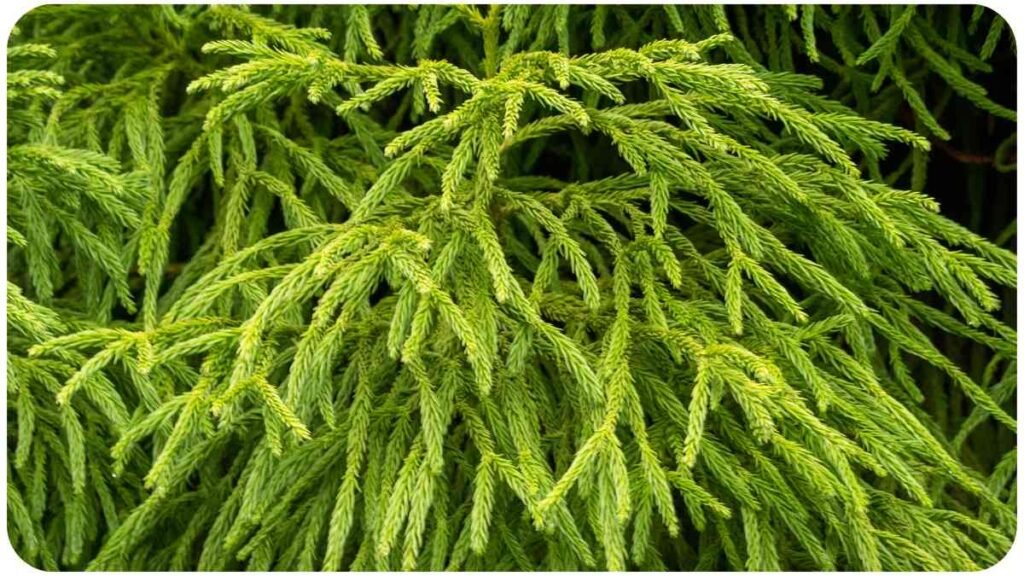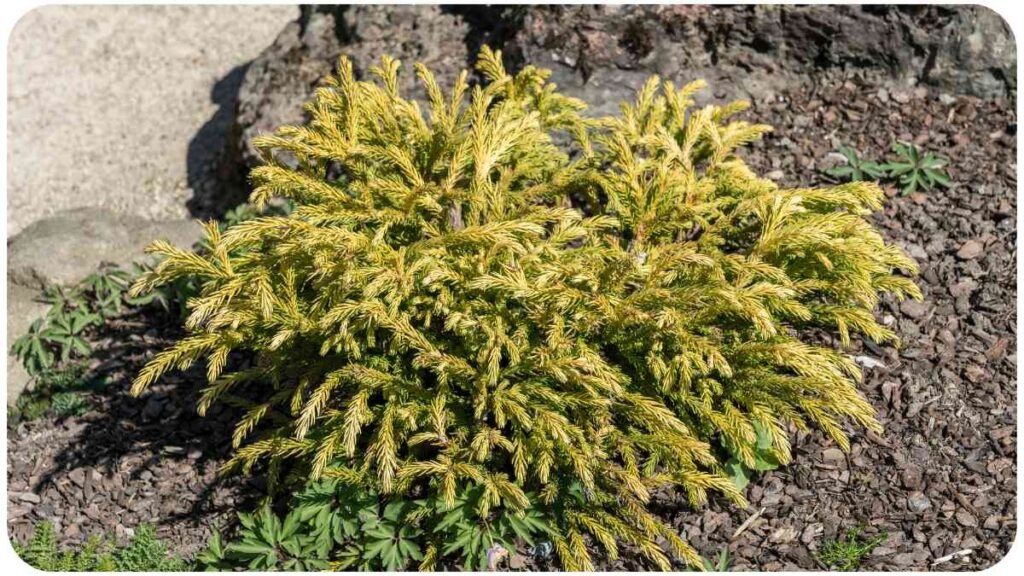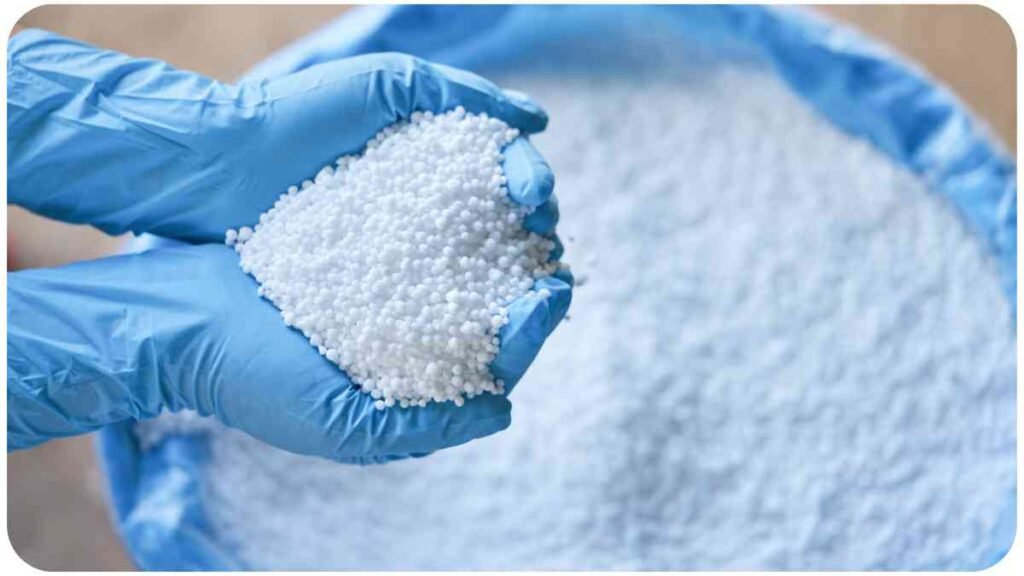Cultivating Cryptomeria Globosa Nana can be a rewarding experience, but success hinges on understanding the nuances of its care.
Whether you’re a seasoned gardener or a novice green thumb, this comprehensive guide will equip you with the knowledge needed to nurture and enjoy the beauty of Cryptomeria Globosa Nana in your garden.
| Takeaways |
|---|
| 1. Understanding Varieties: Learn about different Cryptomeria Globosa Nana varieties and their unique characteristics. |
| 2. Ideal Growing Conditions: Provide the right sunlight, soil, and climate conditions for optimal growth. |
| 3. Seasonal Care Tips: Tailor your care routine based on the specific needs of Cryptomeria during different seasons. |
| 4. Pest and Disease Management: Implement effective strategies to protect your plant from pests and diseases. |
| 5. Pruning Techniques: Master the art of pruning to maintain shape, health, and aesthetic appeal. |
| 6. Companion Plants and Landscaping Ideas: Enhance your garden design by selecting suitable companion plants and incorporating creative landscaping ideas. |
| 7. Learn from Enthusiasts: Gain insights from success stories and challenges faced by Cryptomeria enthusiasts. |
| 8. Frequently Asked Questions: Get quick answers to common queries about Cryptomeria Globosa Nana care. |
| 9. Explore Further Resources: Dive deeper into Cryptomeria care with additional reading from reputable sources. |
Understanding Cryptomeria Globosa Nana

2.1 Origins and Characteristics
Cryptomeria Globosa Nana, also known as Dwarf Japanese Cedar, originates from East Asia and boasts unique characteristics that set it apart from other evergreens. Its compact size and vibrant green foliage make it a popular choice for both small and large garden spaces.
Growing a thriving Cryptomeria Globosa Nana – If you’re curious how to grow flourishing Cryptomeria Globosa Nana, this comprehensive guide provides insights on optimal care, ensuring your garden flourishes with these unique plants.
Table 2.1: Cryptomeria Varieties and Characteristics
| Variety | Characteristics |
|---|---|
| Cryptomeria Globosa | Compact, globe-shaped, slow-growing |
| Cryptomeria Yoshino | Taller, pyramid-shaped, rapid growth |
| Cryptomeria Elegans | Graceful, weeping branches |
2.2 Popular Varieties
Cryptomeria Globosa Nana has several popular varieties, each with its own unique charm. Whether you prefer a classic look or a more whimsical touch, there’s a variety to suit every garden style.
Table 2.2: Cryptomeria Globosa Nana Popular Varieties
| Variety | Features |
|---|---|
| Little Diamond | Dwarf size, blue-green foliage |
| Twinkle Toes | Compact, golden-yellow new growth |
| Globosa Viridis | Rounded shape, vibrant green color |
2.3 Ideal Growing Conditions
To ensure your Cryptomeria Globosa Nana thrives, it’s crucial to provide the right growing conditions. Understanding its preferences for sunlight, soil, and climate will set the foundation for a healthy and vibrant plant.
Table 2.3: Ideal Growing Conditions for Cryptomeria Globosa Nana
| Growing Factor | Ideal Conditions |
|---|---|
| Sunlight | Partial to full sun |
| Soil Type | Well-draining, acidic to neutral soil |
| Climate | Temperate climates with moderate humidity |
Planting Cryptomeria Globosa Nana

3.1 Choosing the Right Location
Selecting the ideal location for planting is the first step toward a thriving Cryptomeria Globosa Nana. Consider factors such as sunlight, soil quality, and proximity to other plants.
Understanding the causes of browning in Dwarf Japanese Cedar – Discover the reasons why your dwarf Japanese cedar is turning brown and explore effective solutions to restore its health, ensuring a vibrant and lush appearance in your garden.
Table 3.1: Sunlight Requirements for Cryptomeria Globosa Nana
| Light Exposure | Suitable Conditions |
|---|---|
| Full Sun | 6 or more hours of direct sunlight per day |
| Partial Shade | Filtered sunlight or dappled shade |
| Full Shade | Limited direct sunlight, suitable for some varieties |
3.2 Soil Preparation
Preparing the soil correctly is essential for the health of your Cryptomeria Globosa Nana. Ensuring good drainage and the right pH level will lay the groundwork for successful cultivation.
Table 3.2: Cryptomeria Soil Preparation Tips
| Soil Preparation Step | Description |
|---|---|
| Soil Testing | Check pH levels and amend accordingly |
| Organic Matter | Add compost for improved soil structure |
| Drainage Assessment | Ensure proper drainage to prevent waterlogging |
3.3 Planting Techniques
Proper planting techniques are vital to establishing a strong foundation for your Cryptomeria Globosa Nana. Follow these steps to ensure a successful planting process.
Table 3.3: Steps for Planting Cryptomeria Globosa Nana
| Planting Step | Description |
|---|---|
| Digging the Hole | Create a hole twice the size of the root ball |
| Positioning the Plant | Center the plant in the hole at ground level |
| Backfilling | Fill the hole with soil and water thoroughly |
Watering and Moisture Management
4.1 Watering Schedule
Establishing a consistent watering schedule is crucial for the health of your Cryptomeria Globosa Nana. Understanding its moisture needs and signs of overwatering or underwatering will guide your watering routine.
Addressing concerns of browning in Cryptomeria Globosa Nana – Uncover the reasons behind Cryptomeria Globosa Nana turning brown with this comprehensive guide, offering valuable insights and practical solutions to maintain the optimal health of these unique plants in your garden.
Table 4.1: Cryptomeria Watering Guidelines
| Season | Watering Frequency |
|---|---|
| Spring | Regular, moderate watering |
| Summer | Increased watering, especially during heatwaves |
| Fall | Gradual reduction in watering |
| Winter | Minimal watering to prevent freezing |
4.2 Signs of Overwatering or Underwatering
Recognizing signs of overwatering or underwatering is crucial to maintaining the health of your
Table 4.2: Signs of Overwatering and Underwatering
| Issue | Signs of Overwatering | Signs of Underwatering |
|---|---|---|
| Yellowing Leaves | Wilting despite soil moisture | Dry, crispy foliage |
| Root Rot | Foul smell, mushy roots | Wilting, stunted growth |
| Mold Growth | Damp, musty soil surface | Soil pulling away from roots |
| Pest Infestation | Increased presence of pests | Reduced pest activity |
4.3 Mulching for Moisture Retention
Mulching is a valuable practice for moisture retention and weed control. Consider using organic mulch to enhance the overall health of your Cryptomeria Globosa Nana.
Table 4.3: Mulching Benefits and Tips
| Mulching Benefit | Mulching Tips |
|---|---|
| Moisture Retention | Apply a 2-3 inch layer around the plant |
| Weed Suppression | Keep mulch a few inches away from the trunk |
| Temperature Control | Choose organic mulch for added nutrients |
Fertilization Tips for Cryptomeria Globosa Nana

5.1 Choosing the Right Fertilizer
Selecting the appropriate fertilizer is crucial for promoting healthy growth in your Cryptomeria Globosa Nana. Understanding the nutritional needs and application timing will optimize its overall well-being.
Reviving the vitality of Lemon Cypress – Banish dryness and bring back the lush greenery by following the tips in this guide to reviving your Lemon Cypress, ensuring a revitalized and vibrant presence in your garden.
Table 5.1: Cryptomeria Fertilizer Guide
| Nutrient Requirement | Recommended Fertilizer |
|---|---|
| Nitrogen | Balanced slow-release fertilizer |
| Phosphorus | Phosphorus-rich fertilizer |
| Potassium | Potassium-balanced fertilizer |
5.2 Application Timing
Applying fertilizer at the right time is key to maximizing its effectiveness and preventing nutrient deficiencies. Follow a strategic schedule based on the growth phases of your Cryptomeria Globosa Nana.
Table 5.2: Fertilization Schedule
| Growth Phase | Fertilization Timing |
|---|---|
| Spring | Early growth phase, before new growth |
| Summer | Mid-season boost for optimal health |
| Fall | Preparing for winter dormancy |
5.3 Common Nutrient Deficiencies
Keep an eye out for signs of nutrient deficiencies in your Cryptomeria Globosa Nana. Addressing these issues promptly will ensure its continued vitality.
Table 5.3: Signs of Common Nutrient Deficiencies
| Nutrient | Signs of Deficiency |
|---|---|
| Nitrogen | Yellowing of older leaves |
| Iron | Yellowing between leaf veins |
| Magnesium | Yellowing starting at leaf edges |
Pruning and Shaping Your Cryptomeria
6.1 Why Pruning is Important
Pruning plays a crucial role in maintaining the shape, size, and overall health of your Cryptomeria Globosa Nana. Understanding why and when to prune will help you make informed decisions for optimal results.
Comprehensive guide to address Rattlesnake Plant drooping – Explore the in-depth insights on why your Rattlesnake Plant is drooping, unraveling the mystery behind its behavior and providing effective solutions to restore its upright and healthy stature in your indoor space.
Table 6.1: Pruning Benefits and Tips
| Pruning Benefit | Pruning Tips |
|---|---|
| Shape Maintenance | Prune to maintain desired size and shape |
| Disease Prevention | Remove dead or diseased branches |
| Air Circulation | Thin out crowded areas for better airflow |
6.2 Pruning Techniques
Mastering pruning techniques is essential for achieving the desired aesthetic and health outcomes for your Cryptomeria Globosa Nana. Follow these techniques to ensure successful pruning.
Table 6.2: Pruning Techniques
| Pruning Type | Description |
|---|---|
| Heading Back | Reducing the length of selected branches |
| Thinning | Removing entire branches to increase light penetration |
| Shaping | Creating a specific form or design |
6.3 Shaping for Aesthetic Appeal
Shaping your Cryptomeria Globosa Nana can add a touch of elegance to your garden. Consider different shaping techniques to enhance its visual appeal.
Table 6.3: Shaping Ideas for Cryptomeria Globosa Nana
| Shaping Technique | Resulting Aesthetic Appeal |
|---|---|
| Topiary | Sculpted, ornamental shapes |
| Pyramidal | Classic, pyramid-shaped silhouette |
| Informal | Natural, unstructured appearance |
Protecting Your Cryptomeria Globosa Nana from Pests and Diseases
7.1 Common Pests
Being proactive in identifying and managing common pests is crucial to safeguarding the health of your Cryptomeria Globosa Nana. Familiarize yourself with potential invaders and take prompt action when needed.
Table 7.1: Common Pests and Prevention Tips
| Pest | Signs of Infestation | Prevention Measures |
|---|---|---|
| Spider Mites | Webbing, stippling on leaves | Regularly hose down foliage, use insecticidal soap |
| Scale Insects | Brown or white scales on bark | Apply horticultural oil, prune affected branches |
| Aphids | Clusters of tiny, soft-bodied insects | Introduce beneficial insects, use neem oil |
7.2 Recognizing Disease Symptoms
Detecting signs of diseases early on is crucial for effective disease management. Keep an eye out for symptoms and act promptly to prevent the spread of infections.
Table 7.2: Cryptomeria Disease Symptoms
| Disease | Symptoms | Management |
|---|---|---|
| Root Rot | Yellowing, wilting, foul smell | Improve drainage, fungicide treatment |
| Needle Blight | Browning and shedding of needles | Prune infected branches, fungicide application |
| Canker Diseases | Sunken lesions on bark, dieback | Prune infected branches, apply copper-based fungicide |
7.3 Effective Pest and Disease Management
Implementing effective pest and disease management strategies is crucial for the longevity of your Cryptomeria Globosa Nana. Combine preventative measures and targeted treatments for a resilient and healthy plant.
Table 7.3: Integrated Pest and Disease Management
| Strategy | Description |
|---|---|
| Regular Inspection | Routinely check for signs of pests and diseases |
| Beneficial Insects | Introduce predators like ladybugs and lacewings |
| Proper Sanitation | Remove and dispose of infected plant material |
| Fungicidal Treatments | Apply fungicides as a preventive or curative measure |
Seasonal Care Guide
8.1 Spring
| Spring Task | Description |
|---|---|
| Pruning | Remove dead or damaged branches, shape for the season |
| Watering | Adjust watering frequency as temperatures rise |
| Mulching | Refresh mulch to retain soil moisture and suppress weeds |
8.2 Summer
The summer season brings warmth and potential challenges for your Cryptomeria Globosa Nana. Ensure it stays healthy and vibrant during the hotter months.
Table 8.2: Cryptomeria Summer Care Tips
| Summer Task | Description |
|---|---|
| Watering | Increase watering during heatwaves, but avoid waterlogged soil |
| Pest Control | Monitor for pests and implement control measures |
| Shade Protection | Provide shade during extreme heat to prevent stress |
| Pruning | Trim any overgrown branches, shape as needed |
8.3 Fall
As fall sets in, your Cryptomeria Globosa Nana prepares for winter dormancy. Take steps to ensure a smooth transition and health during the colder months.
Table 8.3: Cryptomeria Fall Care Tips
| Fall Task | Description |
|---|---|
| Fertilization | Apply a balanced fertilizer to support root development |
| Mulching | Add a layer of mulch for winter insulation |
| Watering | Gradually reduce watering as temperatures drop |
| Leaf Removal | Clear fallen leaves to prevent disease and pests |
8.4 Winter
Winter requires special attention to protect your Cryptomeria Globosa Nana from freezing temperatures. Implement these care tips to ensure its well-being during the colder months.
Table 8.4: Cryptomeria Winter Care Tips
| Winter Task | Description |
|---|---|
| Frost Protection | Cover the plant during frosty nights |
| Minimize Disturbance | Avoid unnecessary pruning or transplanting |
| Monitor Moisture | Water sparingly to prevent root dehydration |
| Insulate Container Plants | Place containers in a sheltered location |
Troubleshooting Common Issues
9.1 Yellowing Leaves
Yellowing leaves can be a cause for concern, but understanding the potential reasons behind it will help you address the issue effectively.
Table 9.1: Causes and Solutions for Yellowing Leaves
| Cause | Solutions |
|---|---|
| Overwatering | Adjust watering frequency, improve drainage |
| Nutrient Deficiency | Apply a balanced fertilizer, address specific deficiencies |
| Root Rot | Improve soil drainage, trim affected roots |
9.2 Browning Tips
Browning tips can indicate stress or a lack of proper care. Identifying the cause is crucial for remedying the issue.
Table 9.2: Causes and Solutions for Browning Tips
| Cause | Solutions |
|---|---|
| Underwatering | Increase watering frequency, especially during dry spells |
| Frost Damage | Provide frost protection during cold nights |
| Fungal Infection | Apply fungicide, prune affected areas |
9.3 Stunted Growth
Stunted growth may point to underlying issues affecting your Cryptomeria Globosa Nana’s overall health. Diagnose and address the root cause promptly.
Table 9.3: Causes and Solutions for Stunted Growth
| Cause | Solutions |
|---|---|
| Poor Soil Quality | Amend soil with organic matter, ensure proper drainage |
| Pest Infestation | Implement pest control measures, prune affected areas |
| Disease | Treat with appropriate fungicides or antibacterial solutions |
Enhancing Your Garden Design with Cryptomeria
10.1 Companion Plants
Pairing your Cryptomeria Globosa Nana with compatible companion plants can elevate the visual appeal of your garden.
Table 10.1: Cryptomeria Companion Plants
| Companion Plant | Features |
|---|---|
| Azaleas | Vibrant blooms complement evergreen foliage |
| Japanese Maples | Contrast in leaf shapes and colors |
| Heuchera | Varied foliage colors, adds texture |
10.2 Landscaping Ideas
Incorporate Cryptomeria Globosa Nana into your landscaping design for a harmonious and balanced garden.
Table 10.2: Cryptomeria Landscaping Ideas
| Landscaping Idea | Description |
|---|---|
| Focal Point | Plant as a centerpiece for visual impact |
| Hedge | Create a privacy screen or decorative hedge |
| Container Planting | Showcase in containers for versatility |
Success Stories: Cryptomeria Enthusiasts Share Their Experiences
11.1 John’s Thriving Cryptomeria Garden
John, an avid gardener, shares his success story with cultivating Cryptomeria Globosa Nana. Despite initial challenges, John’s commitment to proper care has resulted in a flourishing and picturesque garden.
Table 11.1: John’s Cryptomeria Care Highlights
| Success Factor | John’s Approach |
|---|---|
| Soil Preparation | Amended soil with compost for optimal growth |
| Pruning Techniques | Regularly pruned for shape and health |
| Seasonal Care | Adjusted watering and fertilization based on seasons |
11.2 Mary’s Challenges and Solutions
Mary faced common issues with her Cryptomeria Globosa Nana but overcame them with thoughtful care and problem-solving.
Table 11.2: Mary’s Cryptomeria Challenges and Solutions
| Challenge | Mary’s Solutions |
|---|---|
| Yellowing Leaves | Improved drainage, adjusted watering routine |
| Pest Infestation | Implemented integrated pest management techniques |
| Shaping Difficulties | Consulted a local landscaper for professional guidance |
Frequently Asked Questions
12.1 Can Cryptomeria Globosa Nana Thrive Indoors?
Cryptomeria Globosa Nana is primarily an outdoor plant, but with proper care, it can be grown indoors in large containers. Ensure it receives adequate sunlight and proper ventilation.
12.2 How Fast Does Cryptomeria Grow?
The growth rate of Cryptomeria Globosa Nana is relatively slow, making it an ideal choice for small gardens or container planting. Expect an average growth of 3 to 6 inches per year.
12.3 Is Cryptomeria Prone to Deer Damage?
While Cryptomeria Globosa Nana is generally deer-resistant, it’s essential to monitor for any potential damage. Young plants may be more vulnerable, so consider protective measures if deer are prevalent in your area.
Conclusion
In conclusion, caring for Cryptomeria Globosa Nana involves a combination of understanding its unique characteristics, providing ideal growing conditions, and implementing thoughtful care practices throughout the seasons. By following the comprehensive guide and learning from the experiences of enthusiasts like John and Mary, you’ll be well-equipped to cultivate a healthy and vibrant Cryptomeria garden.
Further Reading
Explore additional resources to deepen your knowledge of Cryptomeria Globosa Nana:
- Gardeners World: Cryptomeria Japonica Globosa Nana: Gardeners World provides an in-depth guide, offering valuable insights into the care and characteristics of Cryptomeria Globosa Nana.
- PlantingTree: Cryptomeria Globosa Nana: PlantingTree offers a comprehensive overview, including tips on planting, care, and the unique features of Cryptomeria Globosa Nana.
- Gardenia: Cryptomeria Japonica Globosa Nana: Gardenia’s detailed profile covers everything from planting to pruning, providing a rich source of information for Cryptomeria enthusiasts.
FAQs
How fast does Cryptomeria Globosa Nana grow?
Cryptomeria Globosa Nana has a relatively slow growth rate, averaging 3 to 6 inches per year. This gradual growth makes it an excellent choice for small gardens or container planting.
Can Cryptomeria Globosa Nana thrive indoors?
While primarily an outdoor plant, Cryptomeria Globosa Nana can be grown indoors in large containers with proper care. Ensure it receives sufficient sunlight and ventilation for optimal growth.
Is Cryptomeria Globosa Nana prone to deer damage?
Generally, Cryptomeria Globosa Nana is deer-resistant. However, young plants may be more vulnerable. Consider protective measures if deer are prevalent in your area.
What are common signs of overwatering in Cryptomeria Globosa Nana?
Signs of overwatering include wilting despite soil moisture, foul-smelling soil, and an increased presence of pests. Adjusting watering frequency and improving drainage can address these issues.
How should I shape my Cryptomeria Globosa Nana for aesthetic appeal?
Cryptomeria can be shaped through techniques like topiary, pyramidal, or informal shaping. Choose a shaping method that aligns with your garden design preferences for the desired aesthetic appeal.

Hellen James, a seasoned author at Unified Publishers LLC, brings a wealth of expertise to diverse niches. Specializing in pet care, outdoor adventures, lifestyle, wellness, and culinary delights, Hellen crafts insightful and engaging content that unlocks the full potential of readers’ interests. Explore, learn, and thrive with Hellen James.

